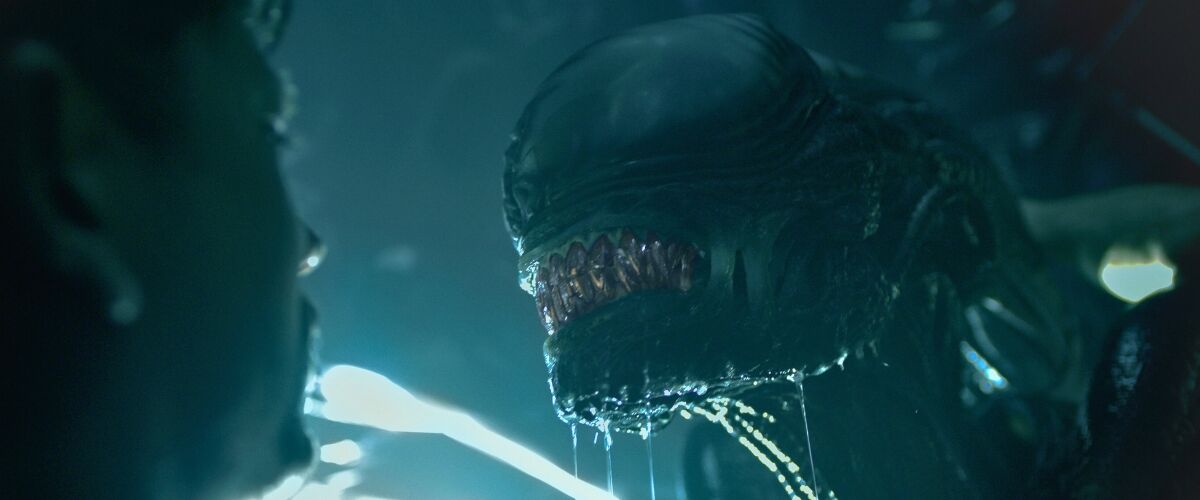“In space, no one can hear you scream.”
The chilling tagline of Ridley Scott’s 1979 masterpiece, Alien, has haunted moviegoers for decades, a stark reminder of the terrifying isolation and vulnerability of humanity when confronted with the unknown, trapped in a confined area in the vastness of space. Alien stuck audiences in the claustrophobic confines of the spaceship Nostromo, where a lone extraterrestrial stalked and slaughtered the crew in a suspenseful game of cat and mouse.
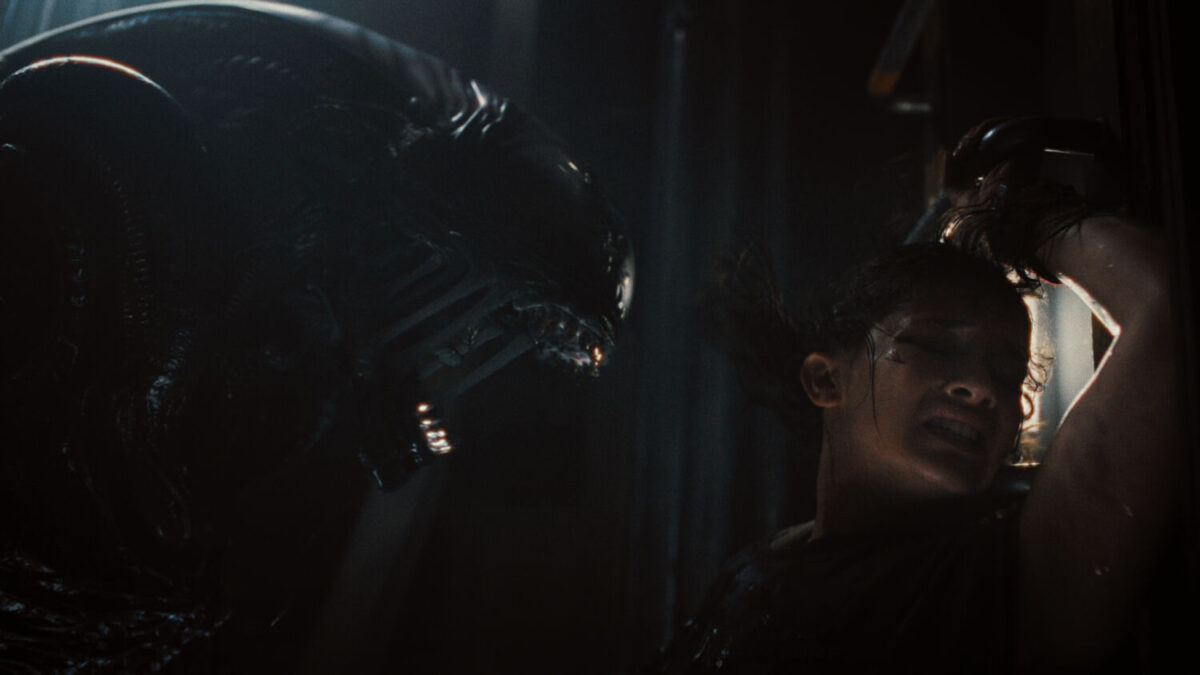
Its 1986 sequel, James Cameron’s explosive and arguably more memorable Aliens, amplified the terror, pitting Ellen Ripley (Sigourney Weaver, Alien, Ghostbusters), the Nostromo’s sole survivor, and hardened space marines against a relentless horde of Xenomorphs in a pulse-pounding battle for survival.
With such unforgettable predecessors, any new addition to the Alien franchise faces the daunting task of living up to those spine-chilling legacies. Since then, various sequels and prequels have attempted to recapture the chilling allure of the original films, ranging from David Fincher’s Alien 3 (1992) and Jean-Pierre Jeunet’s Alien: Resurrection (1997) to newer entries by Scott himself, Prometheus (2012) and Alien: Covenant (2017), though none have matched the impact of Scott’s and Cameron’s definitive works.
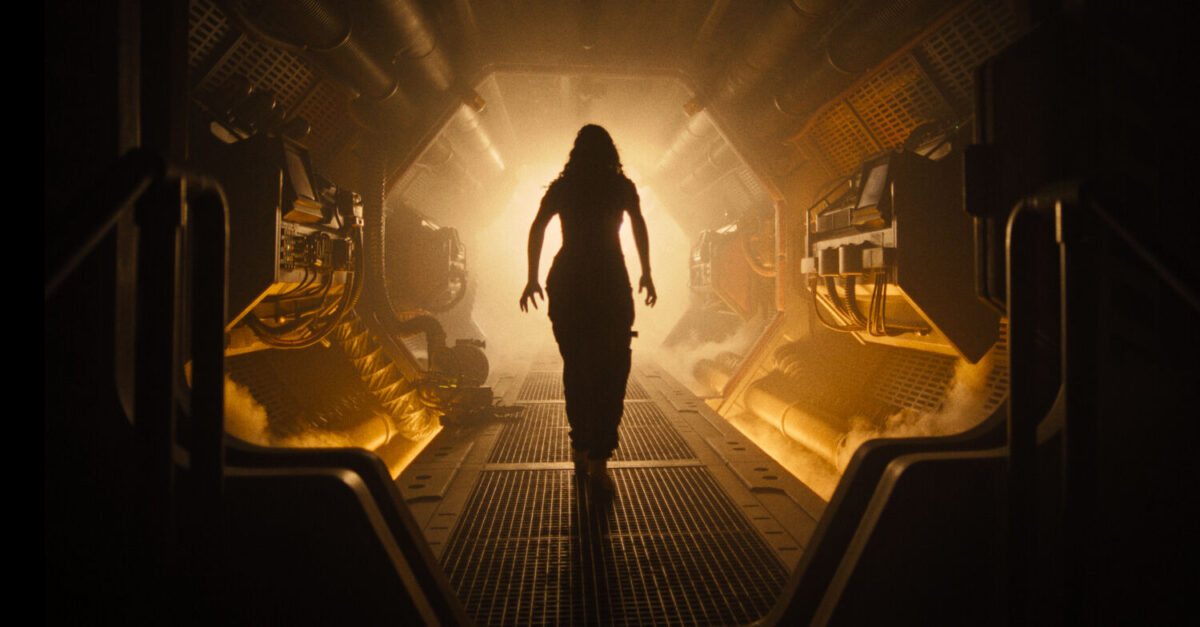
Until now. Well-regarded horror director Fede Álvarez, of Evil Dead (2013) and Don’t Breathe (2016) fame, is clearly a fan of the series and has stepped into the fray, armed with a bold vision: to resurrect the primal terror of the original while infusing it with the action-packed intensity of its sequel. It’s a bold undertaking, one that left us entering the dimly lit corridors of Alien: Romulus with a sense of lingering trepidation, a fear not of Facehuggers or acid-blooded Xenomorphs, but of the film failing to live up to, and to recapture the cinematic magic of its forebears.
Set against the backdrop of Jackson’s Star, a desolate Weyland-Yutani mining colony, Alien: Romulus introduces its inhabitants Rain Carradine (Cailee Spaeny, Civil War, Priscilla) and her synthetic brother Andy (David Jonsson, Murder is Easy, Industry), who exist in a world of harsh realities and limited opportunities. The colony’s surface, baked by unfiltered solar radiation, mirrors the hopelessness of its residents so when the decommissioned space station Renaissance enters orbit, it offers a glimmer of hope to Rain and Andy, of a potential escape route from their dire circumstances.
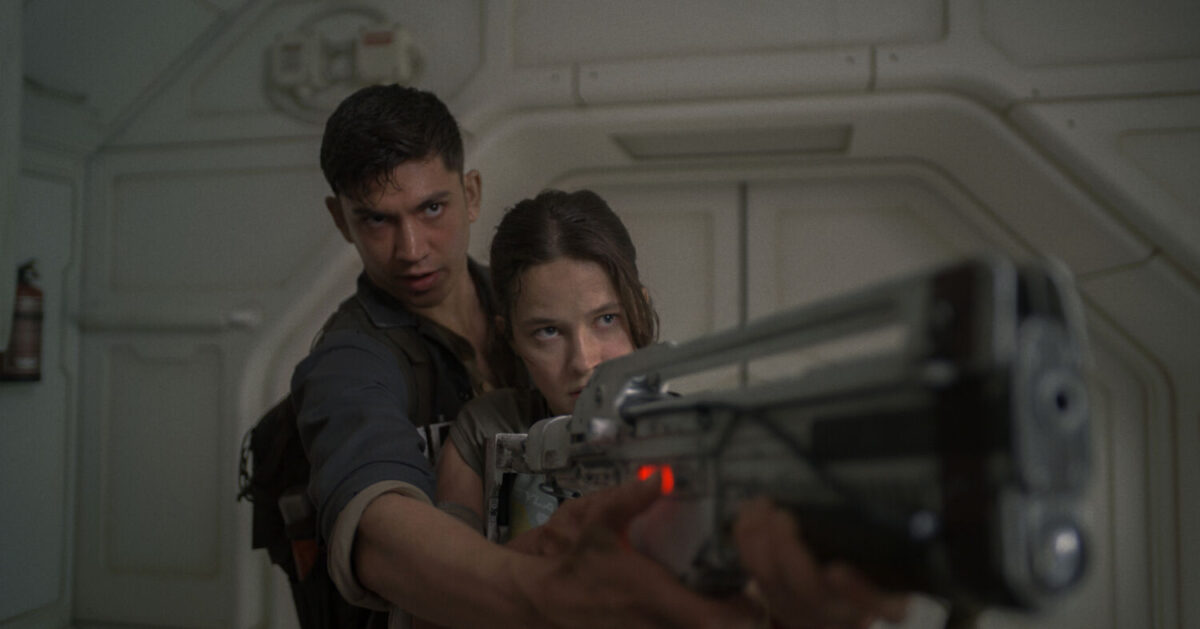
Joined by a band of rugged cohorts including Rain’s ex-boyfriend Tyler (Archie Renaux, Shadow and Bone, Upgraded), Bjorn (Spike Fearn, Tell Me Everything, Aftersun), Tyler’s sister Kay (Isabela Merced, Sicario: Day of the Soldado, Madame Web), and the skilled pilot Navarro (Aileen Wu), they venture into the Renaissance, their mission slowly unfurling into a haunting echo of the franchise’s most nightmarish encounters.
With a sluggish build-up that initially meanders through with the setting up of the story, the first act stretches out the tension a tad too leisurely, in an effort to establish the characters’ bleak surroundings. However, once the crew reaches the Romulus lab aboard the Renaissance, the film descends relentlessly into chaos. A homage to Alien: Resurrection’s underwater sequence, followed by a terrifying encounter with lab-bred Facehuggers sets off a frenetic chain of events, catapulting the crew into a survival horror that recaptures the essence of Alien’s instinctual fear. Another particularly gripping action sequence – a zero-gravity Xenomorph battle – recalls the harrowing aesthetics of the Dead Space video games, delivering the kind of intense, edge-of-your-seat action that has defined the series.
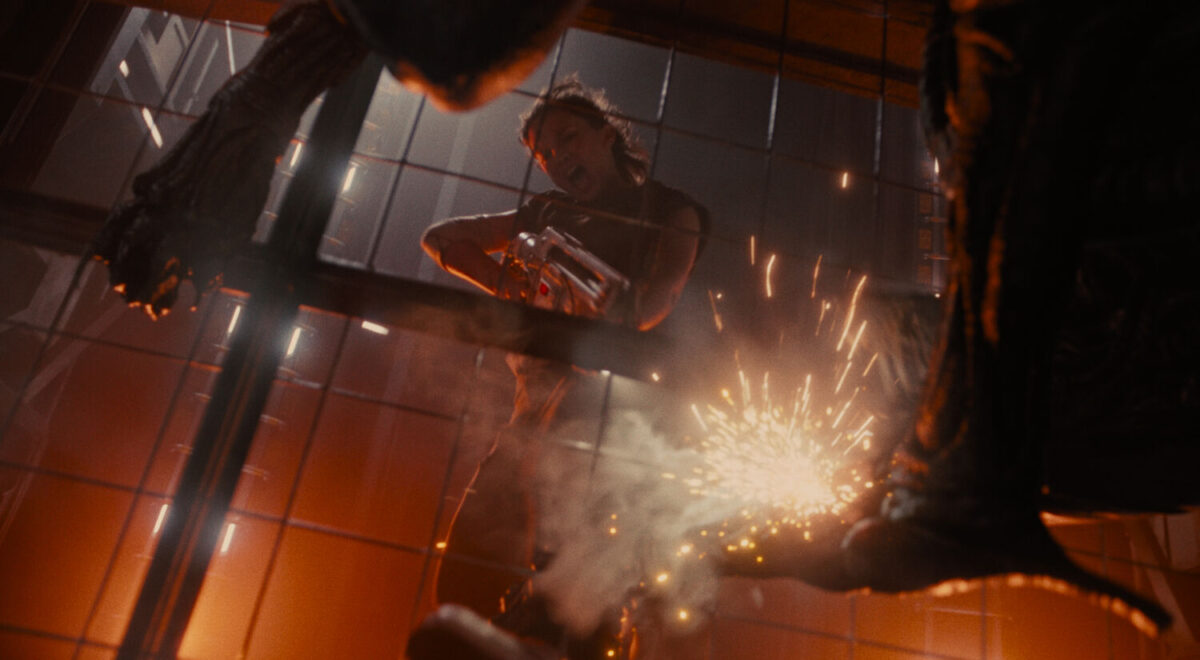
Álvarez, a director with a robust pedigree in horror, once again proves his mettle in the genre, bringing a fresh, albeit horrifying, renovation to Alien‘s house of horrors. Rather than a shadowy abode of the USCSS Nostromo, the terror unfolds within the vast, labyrinthine confines of the space station Renaissance, where every corner is meticulously crafted to amplify the suspense. Realistically weathered steel surfaces and walls, bathed in moody lighting, create an atmosphere of palpable tension. Shadows dance and conceal, leaving the viewer’s imagination to conjure up the terrors that might be lurking just out of sight. Rather than following the modern futuristic aesthetic established in Scott’s recent prequel duology, Álvarez dives deep into the futuristic designs established in the 1970’s, eschewing touchscreen and sleek displays for physical buttons and grainy CRT displays.
Here in Alien: Romulus, the familiar horror trope of shadowy entities picking off victims one by one is reimagined with a horrific twist: the assailants are not mere murderers but fearsome, grotesque Xenomorphs, dripping with detailed drool and entrails, with acid for blood and a deadly inner jaw that is capable of piercing through skulls. When these creatures finally emerge, the sound design explodes into a cacophony of terror, their guttural screeches and sickening attacks a visceral assault on the senses. Amidst the spilling of guts and brain, Álvarez reminds us why the Xenomorphs are terrifying by harkening back to the use of practical effects, showing the slowly, slightly stunted movements of the larger aliens as they turn, stare and slowly reveal their emerging inner jaw.
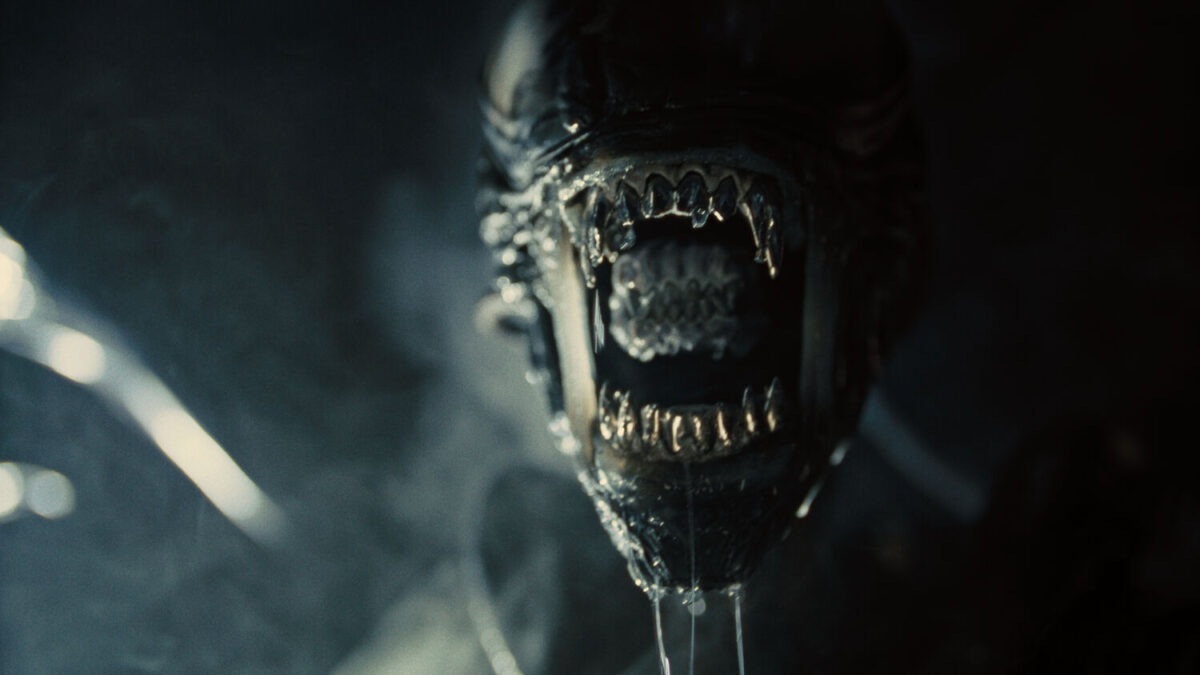
At the heart of this chaos shines Spaeny’s Rain, a character who not only survives but thrives, etching her name in the Final Girl Hall of Fame with a performance that is both electrifying and emotive. Spaeny’s Rain reinforces the heroine archetype also ingrained and elevated in the original movies, stepping into the large shoes left by Weaver’s iconic Ellen Ripley, with a blend of fierce determination and poignant vulnerability as a young woman thrust into a fight for survival against unimaginable horrors. From the moment the Xenomorphs attack, Spaeny commands the screen with raw intensity and pulse rifle in hand, using her intellect and indomitable spirit to outrun them at every deadly turn.
Jonsson complements Spaeny’s powerhouse presence by bringing a subtle depth to his portrayal of Andy, Rain’s synthetic brother. His character’s internal conflict, caught between corporate allegiance and familial love, challenges the traditional roles of synthetics within the Alien universe. Jonsson’s delicate handling of Andy’s emotional struggles lends a touching human element to his synthetic character, enriching the film’s exploration of what it means to be human. Together, Spaeny and Jonsson create a powerful sibling bond that adds emotional depth to the film, proving that even amidst chaos and terror, humanity – in all its forms – can still prevail. And prevail it does.

Alien: Romulus is, at its core, a breathless sci-fi rollercoaster. From the moment the first Xenomorph bursts from its cocoon, the film seizes your adrenal glands in a relentless grip. It thrusts you into escalating battles, each more intense than the last. The construction of these action sequences, the expertly-crafted (though at times slightly draggy) build-up of tension, and the final, jaw-dropping act are a marvel to behold. The film’s mastery of suspense is undeniable, depriving audiences of sound, gravity, oxygen, and sometimes all three, to heighten the intensity of each encounter.
But beyond the tone and setting, Álvarez also embraces the lore by merging all the narrative turns that have entered franchise since the beginning. While set between the original two movies, it brings back the familiar through the use of some amazing de-aging effects, and, for die-hard fans, even finds a way to weave in recent story elements that some fans have had a hard time trying to accept. While recent modern revivals of old franchises extend well into fan service, Álvarez manages to adeptly toe the line, referencing enough to remind the fans, but not in a way that ostracises modern audiences.
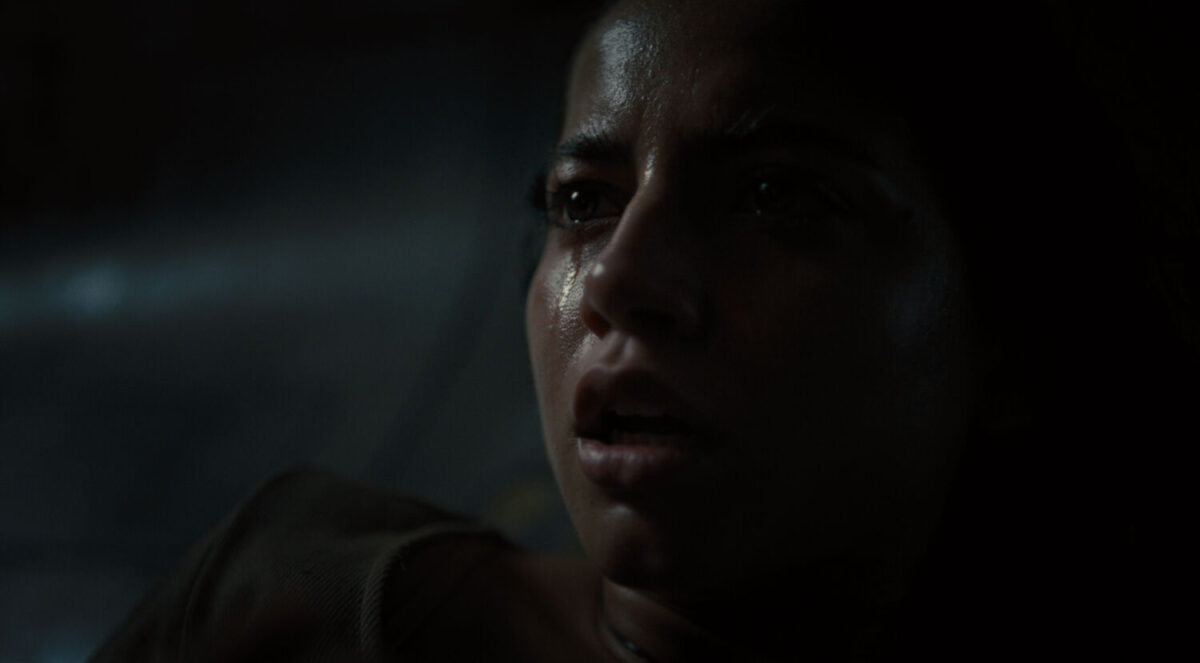
Unlike its predecessors, Alien: Covenant and Prometheus, which occasionally stumbles under the weight of their expansive worlds, Alien: Romulus maintains a tighter narrative and Álvarez doesn’t aim to reinvent the wheel – what he sets out to do is orchestrate an immersive experience that echoes the claustrophobic terror of the original Alien.
In this dead space, he will make you scream. He will make you hold your breath. He will make you question the very nature of humanity, and you’ll love every terrifying second of it.
GEEK REVIEW SCORE
Summary
A breathless sci-fi rollercoaster that seizes your adrenal glands from the first Facehugger encounter, Alien: Romulus honours the franchise’s core elements while blazing a thrilling new trail into the terrifying depths of space.
Overall
8/10-
Story - 7/10
7/10
-
Direction - 8/10
8/10
-
Characterisation - 8/10
8/10
-
Geek Satisfaction - 9/10
9/10

